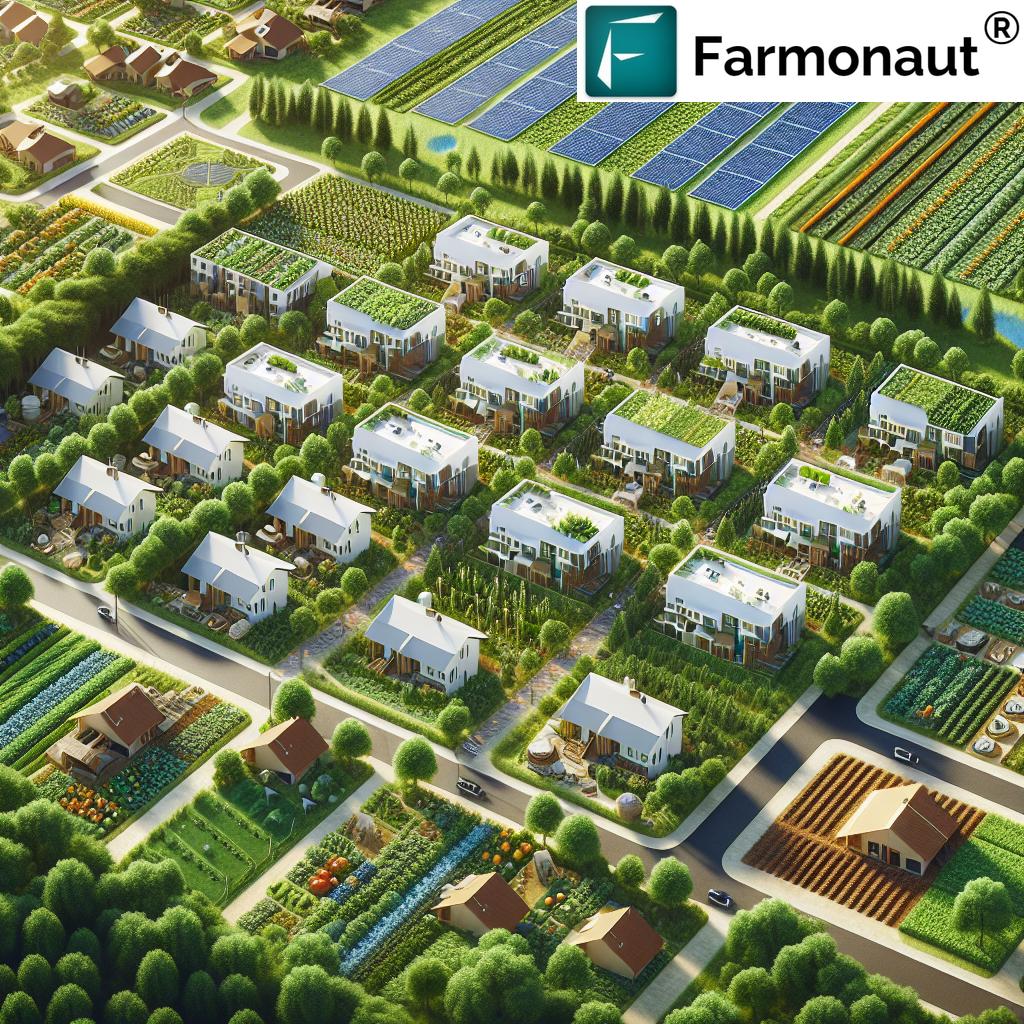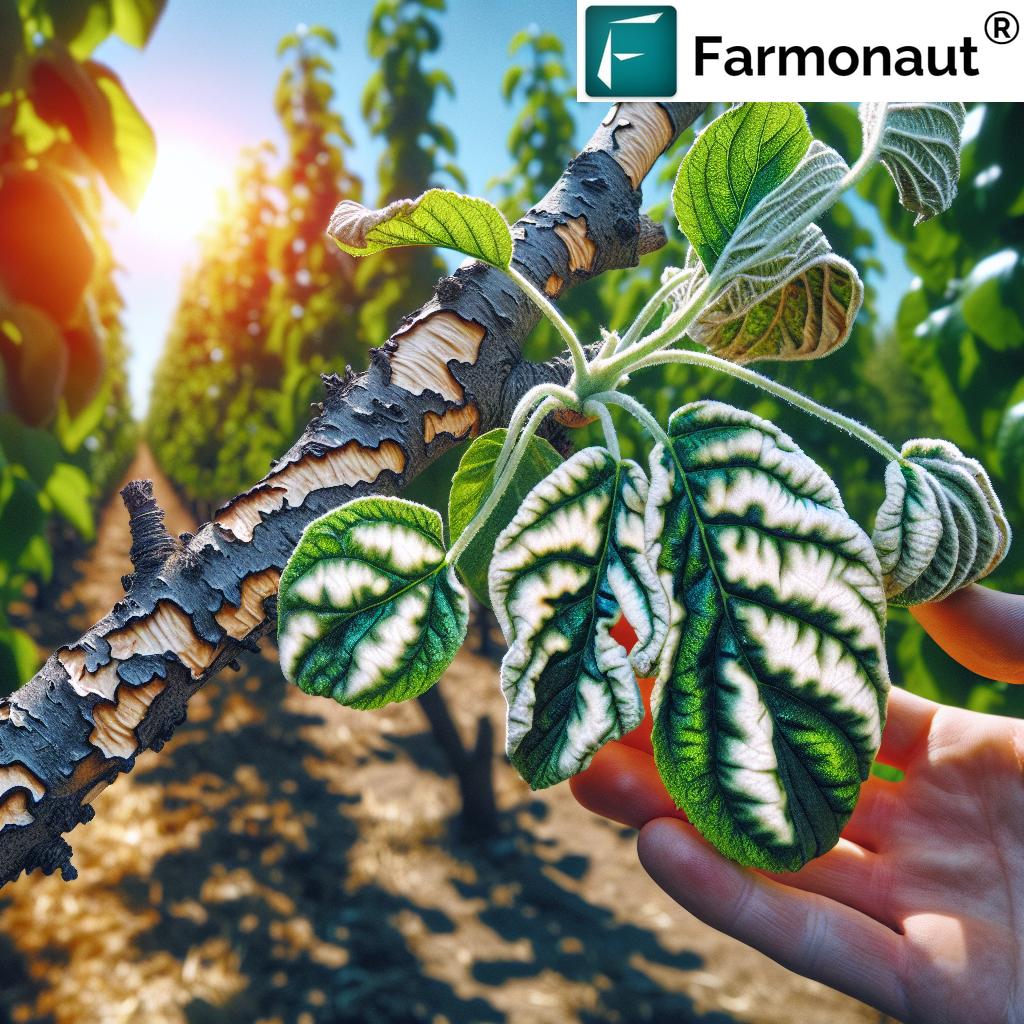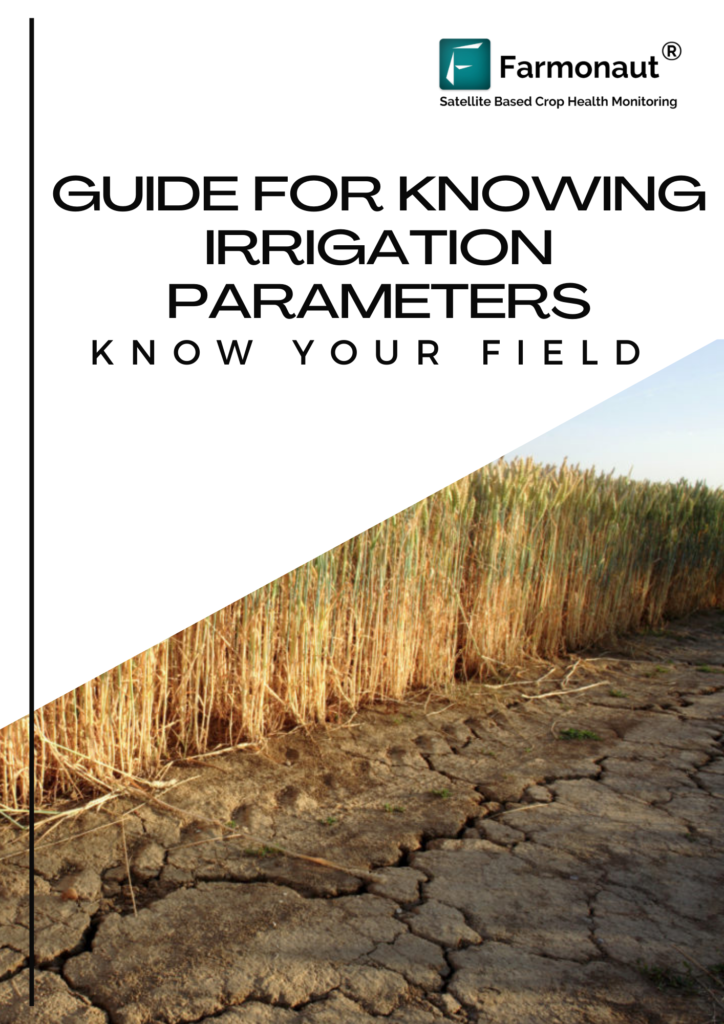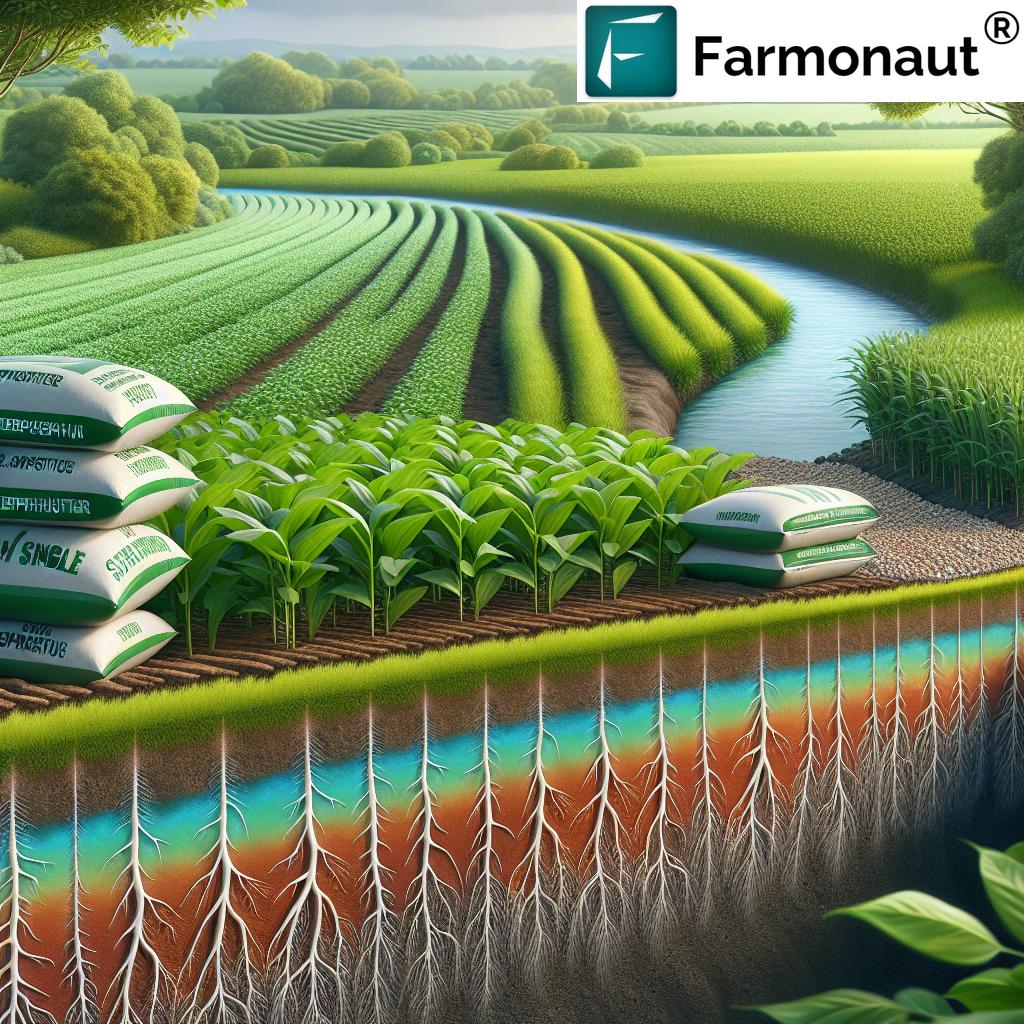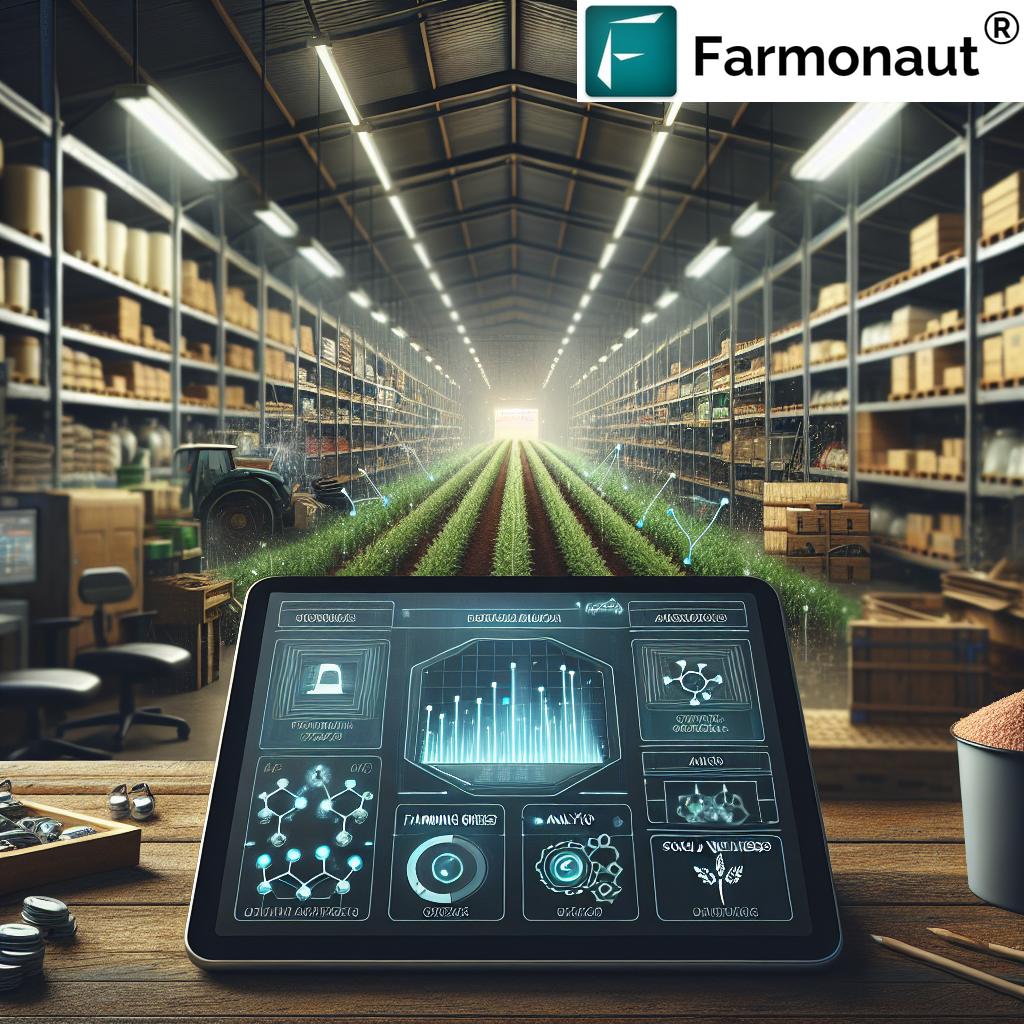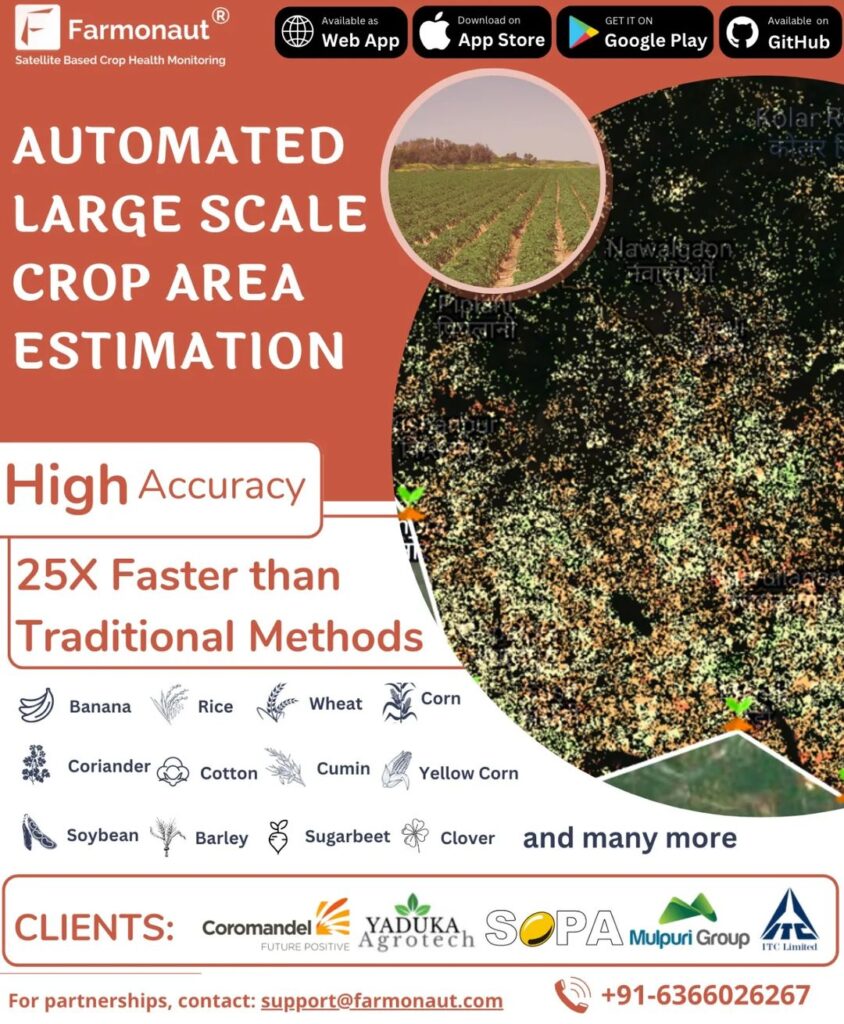Boost Plant Health: 7 Secret Hacks for Crop Resilience
“Over 60% of crop losses globally are due to pests and diseases, highlighting the need for integrated pest management.”
Table of Contents
- The Importance of Plant Health
- 7 Secret Hacks for Crop Resilience
- Comparison Table of Crop Health Hacks and Sustainable Benefits
- In-depth Guide to Each Hack
- Farmonaut: Revolutionizing Plant Health Monitoring
- Food Security and Plant Health
- Emerging Technologies for Sustainable Plant Health
- Policy, Regulations & International Services
- Frequently Asked Questions
- Conclusion
The Importance of Plant Health
When we talk about sustainable agriculture, forestry, and farming, one topic always takes center stage: plant health. Healthy plants are not just the backbone of our global food systems—they are absolutely fundamental to human well-being, nutrition, and environmental stability. According to the Food and Agriculture Organization (FAO), plant pests and diseases destroy nearly 40% of global crops annually, causing serious declines in food availability and quality.
The effects of poor plant health ripple outward—impacting not just humans, but also animal health, ecosystems, and overall balance in nature. Diseased plants can harbor dangerous pathogens, spreading to animals and sometimes humans, resulting in zoonotic diseases. Our duty is clear: we must integrate innovative technologies, sustainable management, and global cooperation to protect plant health and ensure our prosperity.
“Sustainable soil practices can boost crop yields by up to 58%, ensuring food security amid changing climates.”
7 Secret Hacks for Crop Resilience
Building resilience in our crops starts with understanding, improving, and maintaining plant health. Here, we reveal the seven most effective, science-backed plant health hacks—blending time-tested tradition with innovative technologies and sustainable practices:
- Integrated Pest Management (IPM)
- Organic Mulching and Cover Cropping
- Precision Irrigation and Resource Optimization
- Maintaining Soil Health and Fertility
- Agroforestry Systems and Biodiversity Enhancement
- Real-Time Plant Health Monitoring Technologies
- Climate-Smart and Adaptive Farming Measures
In the following sections, we breakdown these hacks—unpacking each strategy’s impact for crop, soil, environment, and food security.
Comparison Table of Crop Health Hacks and Sustainable Benefits
| Hack Name | Description | Estimated Impact on Crop Yield (%) | Soil Health Improvement | Pest Reduction Rate (%) | Sustainability Rating |
|---|---|---|---|---|---|
| Integrated Pest Management (IPM) | Combines biological, cultural, physical, and chemical tools for sustainable pest control. | 15–25 | Medium | 65–75 | ★★★★★ |
| Organic Mulching & Cover Cropping | Applies organic material to cover soil and rotate diverse crops to improve fertility, moisture, and suppress weeds. | 20–30 | High | 30–45 | ★★★★★ |
| Precision Irrigation & Resource Optimization | Delivers water/nutrients using technologies based on real-time crop status, minimizing waste. | 10–20 | Medium | 10–25 | ★★★★★ |
| Maintaining Soil Health & Fertility | Utilizes composting, organic inputs, and rotation to restore soil microbes, retain water, and reduce disease. | 20–25 | High | 35–55 | ★★★★★ |
| Agroforestry Systems & Biodiversity Enhancement | Integrates trees/shrubs in farming, promoting beneficial biodiversity and reducing climate stress. | 12–22 | High | 30–50 | ★★★★★ |
| Real-Time Plant Health Monitoring Technologies | Applies AI, satellite and remote sensing data for disease, pest, and deficiency detection at scale. | 25–35 | Medium | 50–60 | ★★★★★ |
| Climate-Smart & Adaptive Farming Measures | Implements adjustments in crop varieties, timings, and practices to buffer against climate change and new pest patterns. | 18–30 | Medium | 20–35 | ★★★★★ |
In-Depth Guide to the 7 Secret Hacks for Sustainable Plant Health Management
1. Integrated Pest Management (IPM): The Bedrock of Crop Pest and Disease Control
Integrated Pest Management (IPM) stands as the pillar of sustainable plant health management, combining several strategies—biological, cultural, physical, and chemical—under one umbrella. Instead of defaulting to chemical pest control, IPM emphasizes understanding pest and crop biology, monitoring pest populations, and applying control measures only when necessary. This multifaceted approach minimizes risks to the environmental balance, reduces chemical input, and protects beneficial organisms.
- Example: The introduction of natural predators such as the Persimilis mite in strawberry fields effectively controls the Two-Spotted Spider Mite, decreasing the need for chemical pesticides.
- Regional pest monitoring and data-driven thresholds prevent unnecessary chemical application.
- Biological and cultural methods—including crop rotation and companion planting—limit the spread of pests and diseases.
Benefits of IPM: Enhanced crop resilience, long-term soil and environmental stability, reduced input costs, and safer food production.
2. Organic Mulching and Cover Cropping: Soil Health and Fertility Boosters
Organic mulching involves placing natural materials (straw, leaves, compost) over the soil. Cover cropping means planting non-harvested crops (like legumes, clover, rye) between cash crops.
- Suppresses weeds and disrupts pest habitats.
- Improves moisture retention, reduces erosion, and increases organic matter.
- Feeds and diversifies the soil microbiome.
- Facilitates nitrogen fixation and improves nutrients available to plants.
Scientific studies show that sustainable soil practices—especially cover cropping and mulching—can boost crop yields by up to 58%! The result is greater yield stability and improved food security even in regions facing climate challenges.
3. Precision Irrigation and Resource Optimization
As changing weather patterns make water management more challenging, precision irrigation—guided by satellite and sensor data—helps us provide the exact amount of water and nutrients our plants need, when they need it. This approach minimizes waste, prevents diseases linked to overwatering, and reduces salinization risks.
- Efficient water use protects both crops and environmental resources.
- Reduces economic loss from droughts or resource wastage.
- Allows for the integration of plant health monitoring (e.g., via Farmonaut’s platform) to optimize all resources in real time.
Fleet Management becomes essential for large farm operations. Optimize water, fuel, and logistical resources by tracking all equipment and vehicles with strong Fleet Management tools.
4. Maintaining Soil Health and Fertility: The Secret to Plant Resilience
The relationship between soil health and plant vitality is direct and profound. Healthy soil is alive—with billions of microbes forming a rich microbiome that benefits roots and enables plants to resist environmental stresses and diseases.
- Practices like composting, manure application, and rotation build organic matter and replenish nutrients.
- Reduces the need for chemical fertilizers, lowering costs and decreasing environmental impact.
- Enhances water infiltration,:
- Minimizes run-off and erosion
- Supports resilience in drought-prone or flood-prone regions
5. Agroforestry Systems and Biodiversity Enhancement
Integrating trees and shrubs (agroforestry) with farming supports biodiversity and stabilizes the local ecosystems. Agroforestry systems:
- Improve soil structure and trap nutrients naturally.
- Act as windbreaks and buffer crops against extreme climate events.
- Provide habitat for natural pest predators like birds and beneficial insects.
- Sequester carbon, helping us combat climate change and further stabilize the agro-ecosystem.
Agroforestry benefits are multifold: higher yields, reduced chemical dependence, greater resilience, and new income opportunities.
6. Real-Time Plant Health Monitoring Technologies
Technological innovations like satellite imagery, AI, and machine learning have transformed plant health monitoring. Using Farmonaut’s advanced platform, we can now:
- Identify plant diseases, pest infestations, and nutrient deficiencies—remotely and at scale.
- Receive instant notifications and AI-powered recommendations to take corrective action before irreversible damage occurs.
This data-driven approach reduces crop losses, minimizes chemical usage, and supports sustainable farming practices.
- API Access: Integrate satellite and weather data into your own software using the Farmonaut API or explore detailed instructions in the API Developer Docs.
- Traceability: Ensure transparency and trust with Blockchain-based Product Traceability.
7. Climate-Smart and Adaptive Farming Practices
Climate change and agriculture are increasingly intertwined. Unpredictable weather and shifting pest/disease patterns require us to continually update our farming strategies.
- Adopt adaptive measures: change crop varieties, sowing times, and management strategies to suit new local conditions.
- Use forecasting and resilience data from technologies like Farmonaut to buffer against extreme events.
- Practice integrated management for soil, water, pest, and plant health to outmaneuver climate-related stresses.
By integrating these seven secret hacks, we don’t just build short-term productivity—we invest in long-term crop resilience, sustainable environmental balance, and robust food security across global regions.
Farmonaut: Revolutionizing Plant Health Monitoring for Crop Resilience
Farmonaut offers next-generation satellite-based crop health monitoring and AI-powered advisory systems for agriculture. Our award-winning platform was designed to:
- Democratize precision farming—making advanced technology affordable and user-friendly for farmers worldwide.
- Integrate real-time crop health data, weather predictions, and actionable insights for optimum decision making.
- Empower users with blockchain traceability, carbon footprinting, and transparent supply chains.
- Provide resource optimization—including fleet management and administrative tools for large-scale farm management.
Available on web, Android, and iOS, Farmonaut’s solutions are accessible to:
- Individual farmers (small and large scale)
- Agribusinesses seeking operational scale and transparency
- Governments and NGOs for policy, subsidy, or food security management
- Financial institutions—using satellite verification for crop loan and insurance
- Corporate clients—especially in textile and food industries
Our mission: Empower farmers, optimize resources, and ensure sustainable agriculture globally.
Food Security and Plant Health: Ensuring Global Nutrition and Economic Stability
Crop health is at the very heart of global food security. If our crops fail because of pests, diseases, or climate shocks, the consequences are profound—reducing availability, increasing food prices, and putting vulnerable populations at risk of malnutrition. Plant health also feeds into animal health, supports regional and global economic prosperity, and maintains healthy ecosystems.
- Lost crops = lost nutrition, jobs, and stability.
- Diseased plants can harbor pathogens, affecting both animal and human health (potentially through zoonotic transmission).
- Sustainable plant health management approaches are essential for meeting the food and nutrition needs of a growing global population.
Proactive measures—including smart monitoring, integrated pest management, and soil restoration—directly impact our ability to feed the world while minimizing environmental damage and economic loss.
Emerging Technologies for Sustainable Plant Health Monitoring
Innovative technologies are reshaping the way we approach plant health, pest control, and climate resilience in agriculture. Let’s highlight some breakthroughs available through Farmonaut and other cutting-edge platforms:
- Satellite-Based Crop Health Monitoring
Multispectral imagery tracks vegetation health (NDVI), soil moisture, and plant stress—helping us act before problems escalate. - AI-Powered Advisory
Personalized tips, disease diagnostics, and weather-adaptive strategies tailored to each farm and field. - Blockchain Traceability
Transparent supply chains that reassure consumers, ensure compliance, and add value with verifiable product history. - Carbon Footprint Calculators
Measure, track, and decrease agricultural emissions to ensure both environmental and market sustainability. - Resource and Fleet Management Systems
Optimize operational efficiency for large- and small-scale operations.
Connect your land, management tools, and value chain using Farmonaut’s range of farm management solutions and expand sustainability from field to fork.
Policy, Regulatory Frameworks, and International Plant Health Services
Strong policy and regulatory frameworks are the scaffolding upon which plant health management stands. For example, the European Union’s Plant Health Regulation classifies plant pests and implements structured controls—helping to minimize the introduction and spread of invasive species.
- International collaboration is key: services like the Global Plant Clinic provide diagnostic, advisory, and on-the-ground support in over 80 countries.
- Harmonized regulatory measures keep our global food system safe, accountable, and responsive to evolving risks.
- Regional adaptation: Policies must be tailored for specific climates, pest profiles, and agricultural landscapes.
For governments, agribusinesses, and institutions, deploying large-scale monitoring tools and policy frameworks is crucial. Farmonaut’s scalable web and mobile solutions allow seamless, cost-effective implementation in diverse regions.
Frequently Asked Questions (FAQ) on Plant Health Management
What is plant health and why is it important in agriculture?
Plant health refers to the overall condition and vitality of crops, trees, and all cultivated plants. It’s crucial for ensuring high yields, maintaining food quality, supporting ecosystems, and protecting both animal and human health. Without healthy plants, both food security and economic stability are threatened.
How does integrated pest management (IPM) differ from traditional pest control?
IPM employs a combination of biological, chemical, physical, and cultural tools. It emphasizes real-time monitoring of pest populations and the use of control measures only when necessary. Traditional pest control often relies on routine or excessive chemical application, which can harm beneficial organisms and the environment.
What sustainable practices greatly improve soil health?
Practices such as cover cropping, mulching, composting, crop rotation, and minimal tillage significantly improve soil organic matter, boost microbial activity, aid in water retention, and reduce erosion.
Can I monitor plant health on my farm remotely?
Absolutely! With modern plant health monitoring technologies like satellite imagery and AI-driven platforms (such as Farmonaut), you can oversee crop health, pest threats, and nutrition from any device—no matter your location.
How does climate change impact crop pest and disease control?
Climate change alters weather patterns, which in turn affects the timing, severity, and movement of pests and diseases. New strategies—including adaptive farming and smart technologies—are vital to keep pace with these rapid changes.
What is the role of technology in ensuring food security?
Technology empowers us to monitor, predict, and respond to issues before they become crises, ensuring that yields stay high and losses low. From AI-powered advisories to blockchain traceability, digital innovations support sustainable food security for all.
Where can I find more details about Farmonaut’s app and technology solutions?
Visit the official Farmonaut app page for web, Android and iOS options, detailed documentation, and our most advanced modules for precision agriculture.
Conclusion: The Path to Crop Resilience Starts with Plant Health
Plant health is not a single discipline—it’s the complex intersection of biological, environmental, technological, and policy factors. Achieving sustainable, productive, and resilient agriculture requires us to:
- Integrate smart technologies with time-proven farming practices
- Monitor for early warning signs of pests, diseases, and stress
- Restore and maintain soil health for long-term fertility
- Foster biodiversity through agroforestry and habitat management
- Embrace climate adaptation and precision farming at every level
Our global challenge is significant: balancing higher food availability and quality against climate risks and population pressures. By adopting the seven secret hacks of crop resilience—and leveraging advanced solutions like Farmonaut—we can protect our crops, optimize resource use, and secure a thriving, sustainable future for all.








